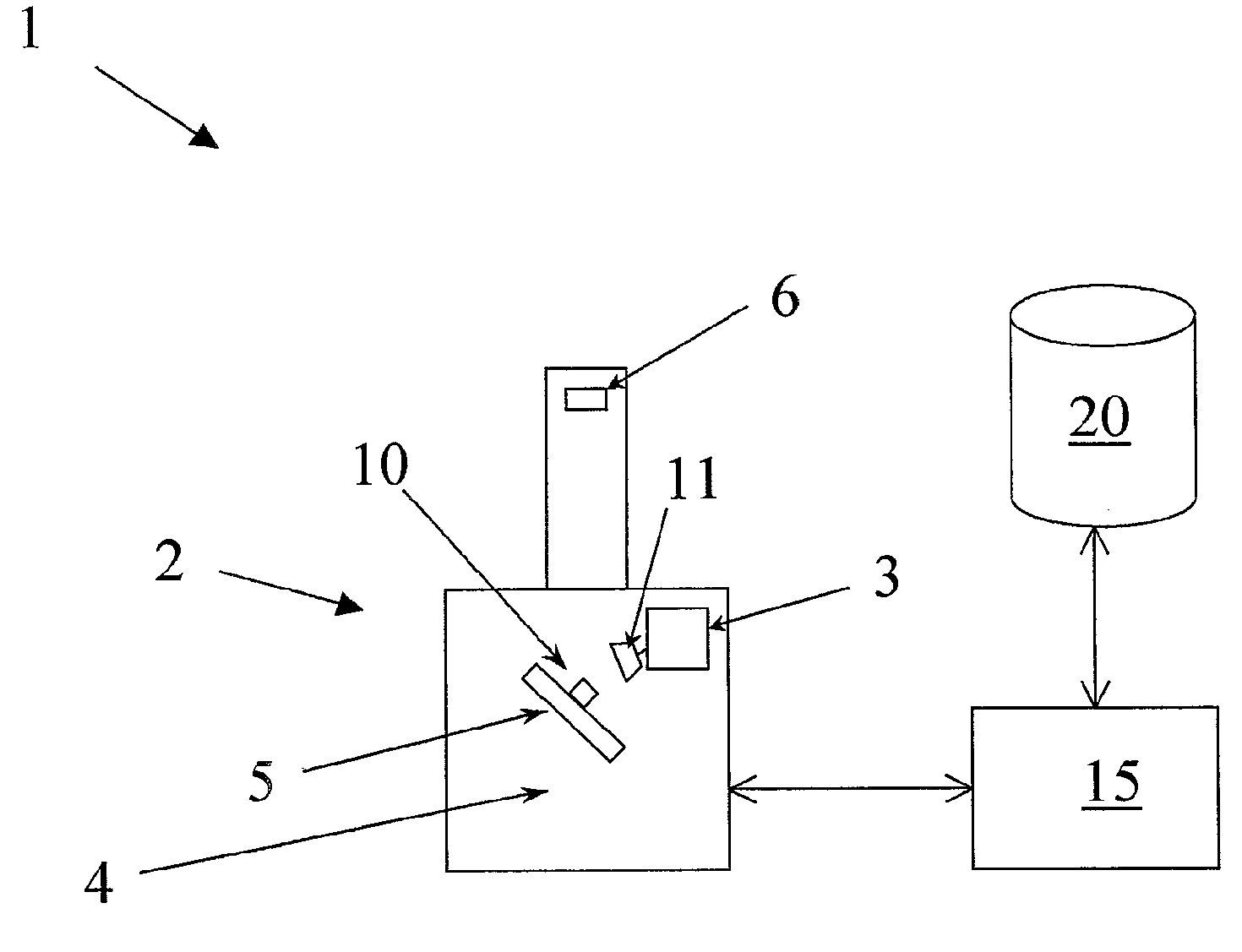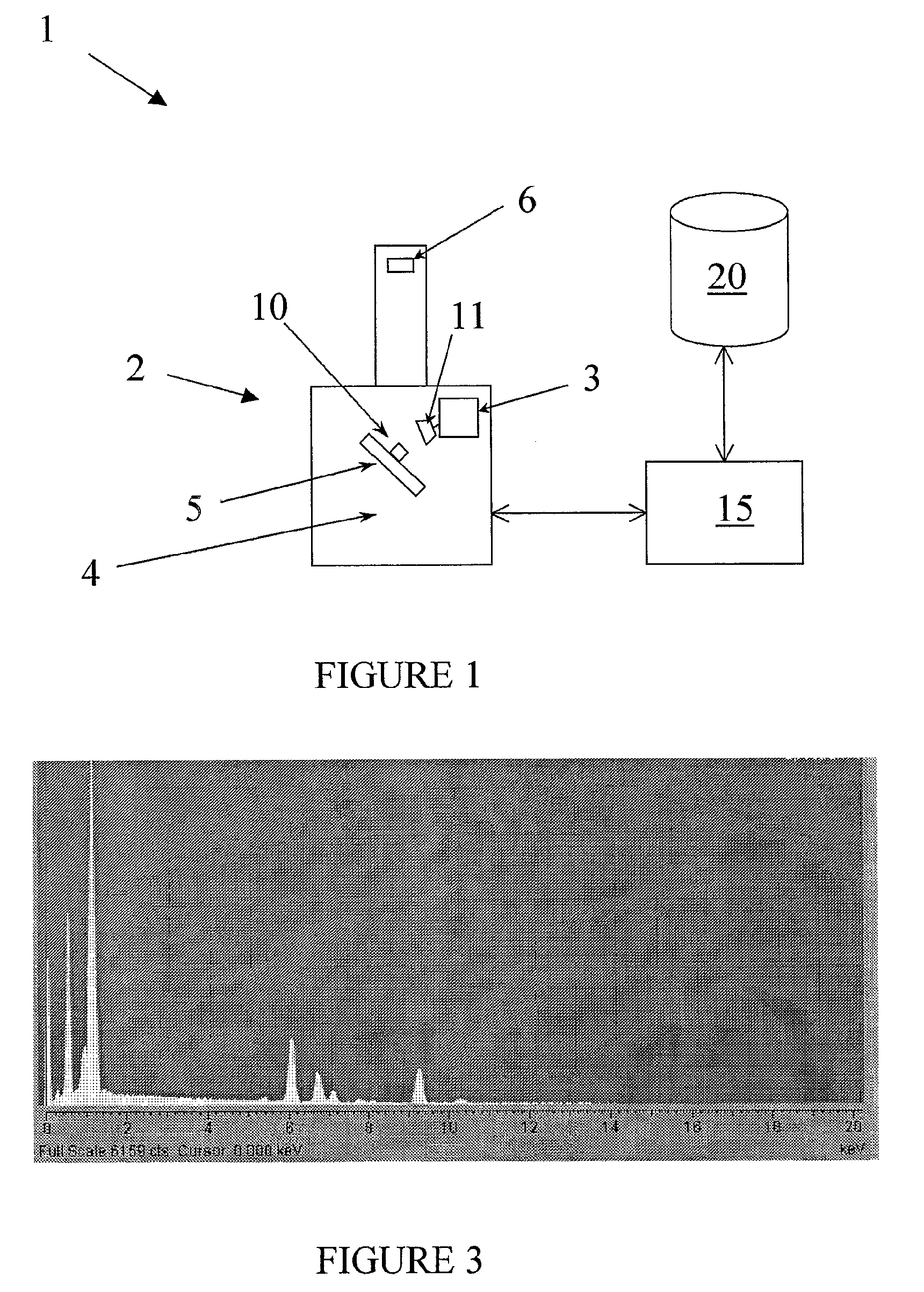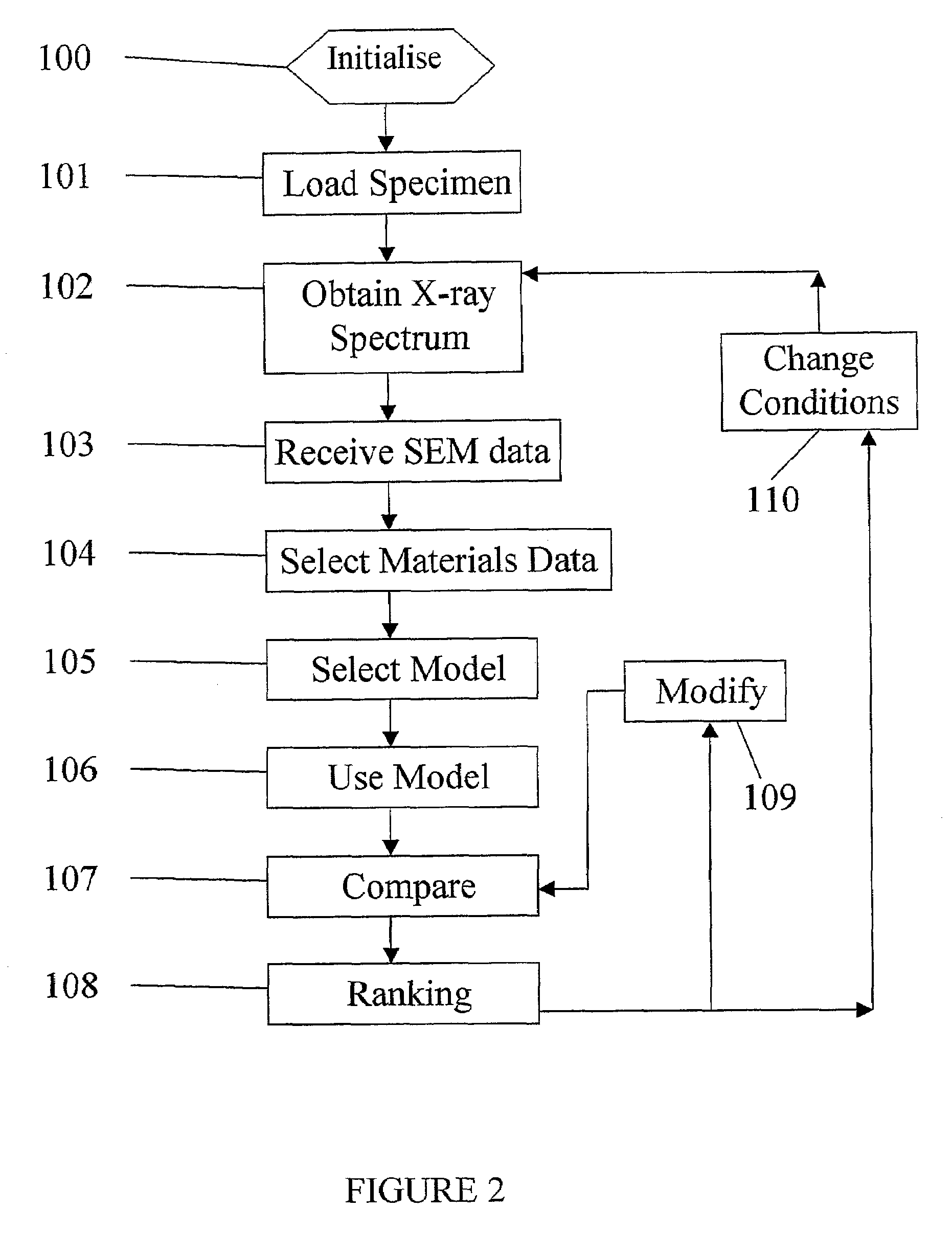Method and apparatus for material identification
a material identification and material technology, applied in the field of methods, can solve the problem of impracticality of direct measurement of spectra from all candidates, and achieve the effect of reducing the solid angle subtended by the detector
- Summary
- Abstract
- Description
- Claims
- Application Information
AI Technical Summary
Benefits of technology
Problems solved by technology
Method used
Image
Examples
example 1
[0066]In this first example, a sample of Gd3Ga5O12 with surface at approximately 70 degree surface tilt is placed in the electron microscope 2 using a 20 kV accelerating voltage and the spectrum is recorded using the Oxford Instruments Analytical Limited INCA Energy x-ray analysis system 3. A Si(Li) detector with approximately 133 eV resolution at 5.9 keV and an elevation angle of 35 degrees is used and records an x-ray energy spectrum as shown in FIG. 3.
[0067]The chemical formulae for all 63,000 entries in the Inorganic Crystal Structure Database (ICSD) (J. Res. Natl. Inst. Stand. Technol. 101, 217 (1996) is used as the dataset of candidate material compositions. Each chemical formula gives atomic proportions that are converted to mass percentage of elements in the material. A spectrum synthesis program (based on “Improved X-ray Spectrum Simulation for Electron Microprobe Analysis”, Peter Duncumb, Ian R. Barkshire, Peter J. Statham, Microsc. Microanal. 7, 341-355, 2001.)) is used t...
example 2
[0071]In the second example, a spectrum from a sample of SrAlLaO4 is obtained using the same SEM 2 and acquisition conditions as for the first example. In this case, even though the incident electron beam energy is 20 keV the sample charges negatively under the electron beam so the DHL is reduced to about 6 keV as shown in FIG. 4.
[0072]Some elemental peaks such as SrKα 14.2 keV do not appear in the spectrum because the landing energy of electrons is below the critical excitation energy for these x-rays. Furthermore, the relative intensities for peaks that are excited are different than they would be if the sample were not charging. To find candidate materials that would show peaks in the spectrum at the same energy, irrespective of relative intensity, both measured and synthesised spectra are modified by replacing all channel counts in the vicinity of peaks by a suitable constant and channel counts elsewhere by 0. In this example, the peaks are detected by a “Top Hat” filter (“Decon...
PUM
| Property | Measurement | Unit |
|---|---|---|
| accelerating voltage | aaaaa | aaaaa |
| elevation angle | aaaaa | aaaaa |
| critical excitation energy | aaaaa | aaaaa |
Abstract
Description
Claims
Application Information
 Login to View More
Login to View More - R&D
- Intellectual Property
- Life Sciences
- Materials
- Tech Scout
- Unparalleled Data Quality
- Higher Quality Content
- 60% Fewer Hallucinations
Browse by: Latest US Patents, China's latest patents, Technical Efficacy Thesaurus, Application Domain, Technology Topic, Popular Technical Reports.
© 2025 PatSnap. All rights reserved.Legal|Privacy policy|Modern Slavery Act Transparency Statement|Sitemap|About US| Contact US: help@patsnap.com



